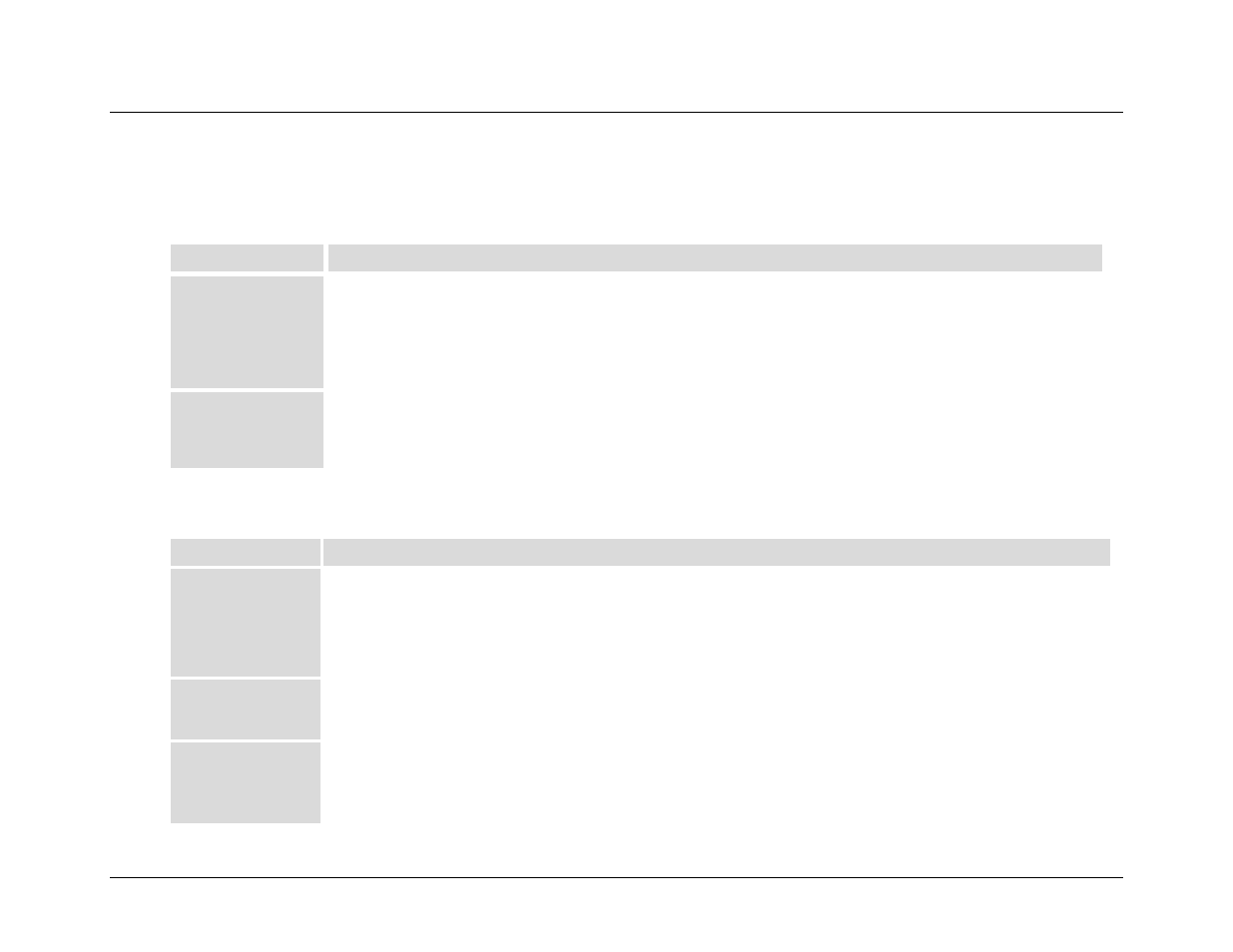5 instruction code qualifier – Comtech EF Data CTOG-250 User Manual
Page 182

CTOG-250 Comtech Traffic Optimization Gateway
Revision 1
Serial-based Remote Product Management
MN-CTOG250
8–6
8.2.2.5 Instruction Code Qualifier
This single character further qualifies the preceding instruction code. Code Qualifiers obey the following rules:
From Controller-to-Target, the only permitted characters are:
Character
Definition
=
(ASCII code 61)
This character is used as the Assignment Operator (AO). It establishes that the Instruction Code that precedes it is to be used as a
command to assign or configure operation. The instruction set that follows serves to assign the Target’s new parameter setting or
operational value.
Example: In a m essage from C ontroller-to-Target, I G1=aaa.bbb.ccc.ddd/yy means “ set t he G E LAN-1 Port I P addr ess t o
aaa.bbb.ccc.ddd/yy”
?
(ASCII code 63)
This character is used as the Query Operator (QO). It establishes that the Instruction Code that precedes it is to be used as a query
that returns the Target’s current configured parameter setting or operational value.
Example: From Controller-to-Target, IG1? means “what’s the current GE LAN-1 Port IP address?”
From Target-to-Controller, the only permitted characters are:
Character
Definition
=
(ASCII code 61)
This character is used in two ways:
a. If the Controller sends a query to the Target – for example, TFQ? (meaning “what’s current value of this parameter?”) – the Target
responds with TFQ=1234.5678, the value for that queried parameter.
b. If the Controller sends an instruction to set a parameter to a particular value, and the value sent is valid, the Target acknowledges
the message and responds with TFQ= (with no message arguments).
?
(ASCII code 63)
If the Controller sends an instruction to set a parameter to a particular value, and the value sent is not valid, the Target then
acknowledges the message and responds with, for example, TFQ? (with no message arguments). This indicates that there was an error
in the message sent by the Controller.
!
(ASCII code 33)
If the Controller sends an instruction code that the Target does not recognize, the Target responds by echoing the invalid instruction,
followed by !
Example: TFQ!
